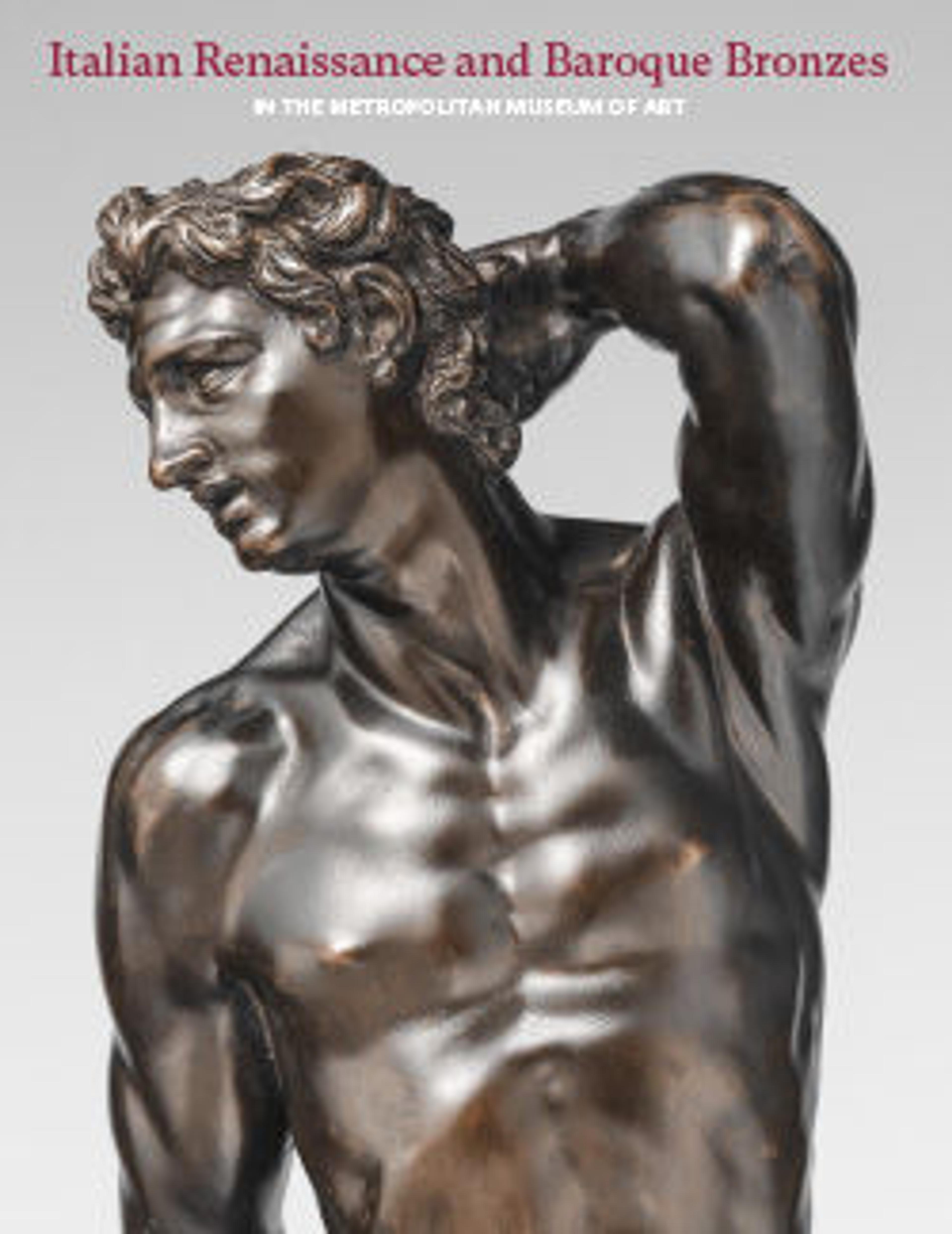The flagellation of Christ
Although it has been exhibited, this plaque has eluded scholarly attention. It is heavy in every sense and shows a deliberately “primitive” approach and all-too-knowing observation of quattrocento technique. The vigorous chiseling of the back, for instance, is consistent with an early practice by which even the backs of reliefs and the undersides of statuettes might receive a lot of attention. But the artist responsible unleashed a store of inconsistencies. His point of departure is a Donatellesque composition known in slightly smaller bronze plaques in the Louvre and the Bode-Museum.[1] From one or the other of these he took the two all-but-naked flagellators who swing their knouts at Jesus. However, the one on the right has been completely misunderstood so that the front of his torso and the back of his hips are seen simultaneously in an impossible alignment. The same incongruously twisted contrapposto occurs in the putto below him. The soldier at left, meanwhile, wears a fanciful outfit more resonant of swimwear than armor.
The putti supporting the coat of arms form an exergue whose ornamental nature is at odds with the tragic episode (and it must be said that Christ himself exhibits little pathos). The coat of arms is per pale with argent and vair in pale.[2] Disturbingly, the figures’ flesh and costumes have been indiscriminately stippled, while blank surfaces and the background are highly burnished. Some solder on the back suggests that the plaque was once framed. There is no buildup of patina; where rubbed, at top rear right, the alloy is highly cuprous.
The relief was at one time assigned to the “School of Donatello,” but a pencil note by John Goldsmith Phillips summed up the situation perfectly: “This clumsily modeled relief is far removed from the Master.” An attribution to Antonio Filarete, that seminal participant in the Roman early Renaissance, was once suggested, but Pietro Cannata rightly rejected the thought.
-JDD
Footnotes
(For key to shortened references see bibliography in Allen, Italian Renaissance and Baroque Bronzes in The Metropolitan Museum of Art. NY: The Metropolitan Museum of Art, 2022.)
1. Landais 1958, pl. 4; Bange 1922, pl. 1.1.
2. This is not the coat of arms of the Odescalchi, who originated in Como and only attained power in the seventeenth century. A suitable family has not been identified.
The putti supporting the coat of arms form an exergue whose ornamental nature is at odds with the tragic episode (and it must be said that Christ himself exhibits little pathos). The coat of arms is per pale with argent and vair in pale.[2] Disturbingly, the figures’ flesh and costumes have been indiscriminately stippled, while blank surfaces and the background are highly burnished. Some solder on the back suggests that the plaque was once framed. There is no buildup of patina; where rubbed, at top rear right, the alloy is highly cuprous.
The relief was at one time assigned to the “School of Donatello,” but a pencil note by John Goldsmith Phillips summed up the situation perfectly: “This clumsily modeled relief is far removed from the Master.” An attribution to Antonio Filarete, that seminal participant in the Roman early Renaissance, was once suggested, but Pietro Cannata rightly rejected the thought.
-JDD
Footnotes
(For key to shortened references see bibliography in Allen, Italian Renaissance and Baroque Bronzes in The Metropolitan Museum of Art. NY: The Metropolitan Museum of Art, 2022.)
1. Landais 1958, pl. 4; Bange 1922, pl. 1.1.
2. This is not the coat of arms of the Odescalchi, who originated in Como and only attained power in the seventeenth century. A suitable family has not been identified.
Artwork Details
- Title: The flagellation of Christ
- Maker: Influenced by Donatello (Italian, Florence ca. 1386–1466 Florence)
- Date: late 19th–early 20th century
- Culture: Italian, Tuscany
- Medium: Bronze
- Dimensions: Overall (confirmed): 7 3/16 × 7 3/4 × 9/16 in. (18.3 × 19.7 × 1.4 cm)
- Classification: Sculpture-Bronze
- Credit Line: Gift of J. Pierpont Morgan, 1917
- Object Number: 17.190.2094
- Curatorial Department: European Sculpture and Decorative Arts
More Artwork
Research Resources
The Met provides unparalleled resources for research and welcomes an international community of students and scholars. The Met's Open Access API is where creators and researchers can connect to the The Met collection. Open Access data and public domain images are available for unrestricted commercial and noncommercial use without permission or fee.
To request images under copyright and other restrictions, please use this Image Request form.
Feedback
We continue to research and examine historical and cultural context for objects in The Met collection. If you have comments or questions about this object record, please contact us using the form below. The Museum looks forward to receiving your comments.
